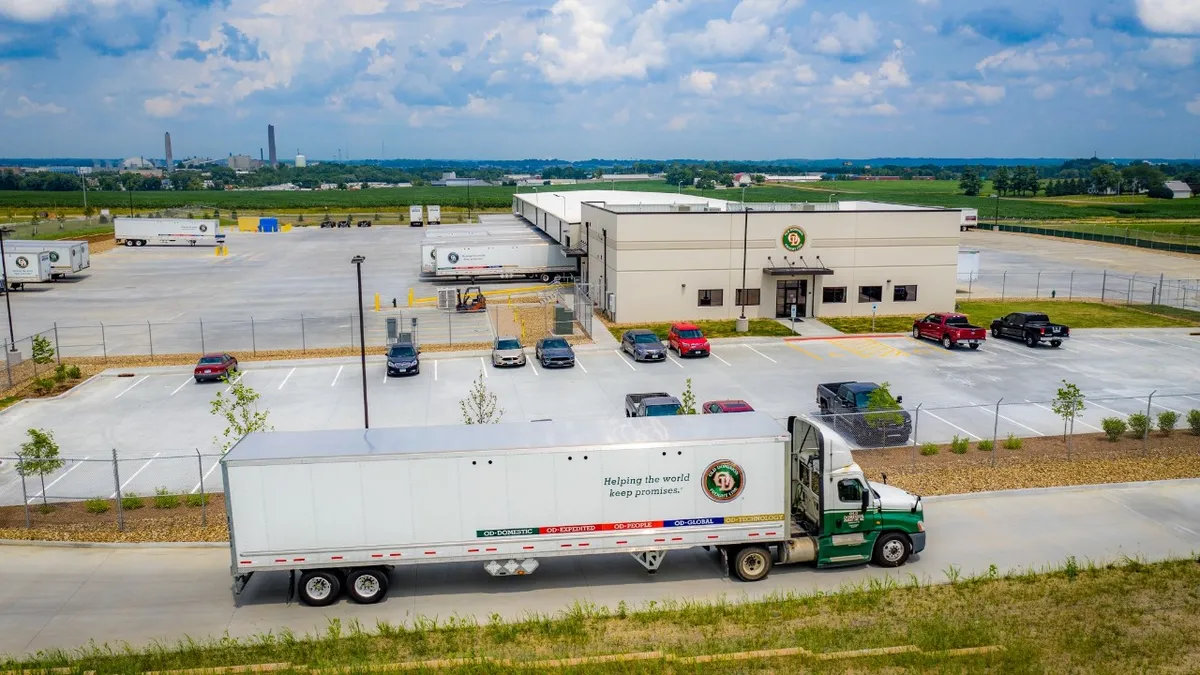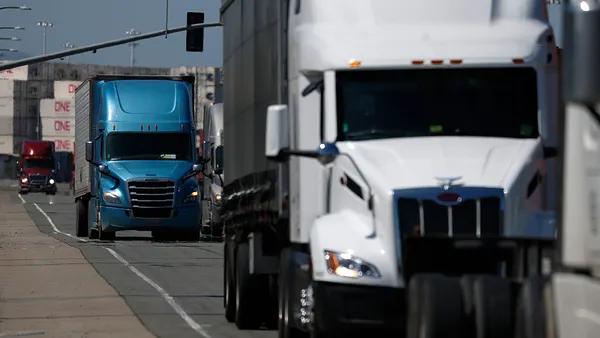Persistently muted freight demand is leading some LTL carriers to trim their spending plans for the year.
Some of the market’s biggest players are rethinking their 2023 capital expenditures after investing hundreds of millions of dollars a year to expand operations and meet a rush of pandemic-fueled demand.
Some other fleets, however, are moving full speed ahead with their planned investments. While lowering capex is one option available to executives in a challenging economy, investments made in down markets often allow companies to realize greater gains once demand improves.
Transport Dive analyzed Q1 earnings calls and reports to learn whether — and how — companies’ plans are changing amid an economic contraction.
ArcBest
ArcBest is forging ahead with its planned $300 million to $325 million total 2023 net capital expenditures, CFO David Cobb said on a Q1 earnings call.
The company is making ongoing real estate investments throughout its network, including new and upgraded facilities. While managing its costs, ArcBest remains focused on profitable growth through “effectively capitalizing on business opportunities,” Cobb said.
“Meeting customer needs remains a priority, and our focus on helping customers navigate their supply chain challenges will benefit our business by preserving long-lasting relationships with them,” the CFO added.
Old Dominion Freight Line
After initially planning to spend $800 million, Old Dominion lowered its planned 2023 capex by $100 million in Q1 as the carrier awaits a return in demand. The company reduced its planned real estate spend from $300 million to $260 million, equipment purchases from $400 million to $365 million and tech investments from $100 million to $75 million.
But Old Dominion still expects to bring on a number of new trucks and make “pretty steady progress” on lowering its fleet age, despite lingering supply chain issues, CFO Adam Satterfield said on an earnings call.
"When we've got equipment that has been down for maintenance, equipment has stayed down for longer periods of time," Satterfield said. "So we're continuing to kind of manage through those challenges while we're also trying to manage cost.”
Saia
Saia reported in Q4 2022 that its plan to spend more than $400 million this year was “subject to ongoing evaluation of market conditions.” Despite a stubbornly soft market, the carrier hasn’t reduced its 2023 capex plans, as of Q1.
Net capital expenditures were $128.1 million in Q1 and $244.6 million of the remaining spend for the year was committed as of March 31, the company reported.
“Projected 2023 capital expenditures include normal replacement cycles of revenue equipment and investments in technology,” Saia said in a filing. “In addition, the Company plans to add revenue equipment and real estate investments to support our growth initiatives.”
TForce Freight
TFI International is reducing its planned 2023 capex by about $50 million, to a range of $200 million to $225 million.
“I also note that these ranges now reflects $300 million of capital deployed towards either M&A and share buyback,” the CEO said on a Q1 call last month.
It's unclear how the reduction might affect plans to lower the age of its TForce Freight LTL fleet, which was “abandoned for years” before its acquisition in January 2021, Chairman, President and CEO Alain Bédard said on a Q4 earnings call.
“We’re going to be running like a 4-year-old fleet, versus a 7.5-year-old fleet like when we bought the company,” Bédard said in February.
Yellow
Yellow did not report a full-year capex outlook, but its Q1 investments in equipment and technology fell 18% YoY. The carrier, which replenished its fleet in 2021, spent $29.6 million in Q1 of this year, down from $36.4 million in the same three months of last year.
The One Yellow network overhaul — which seeks to combine the company’s YRC Freight, Reddaway, New Penn and Holland operating companies — offers opportunities to remove older trucks from Yellow’s fleet, CEO Darren Hawkins said on an earnings call.
“We’re pulling back on capex during a downturn, and once things do improve, ... we could be in a position to actually create our own capacity," Hawkins said. “We would create that additional capacity just by eliminating the redundancy. And that especially applies to tractors.”












